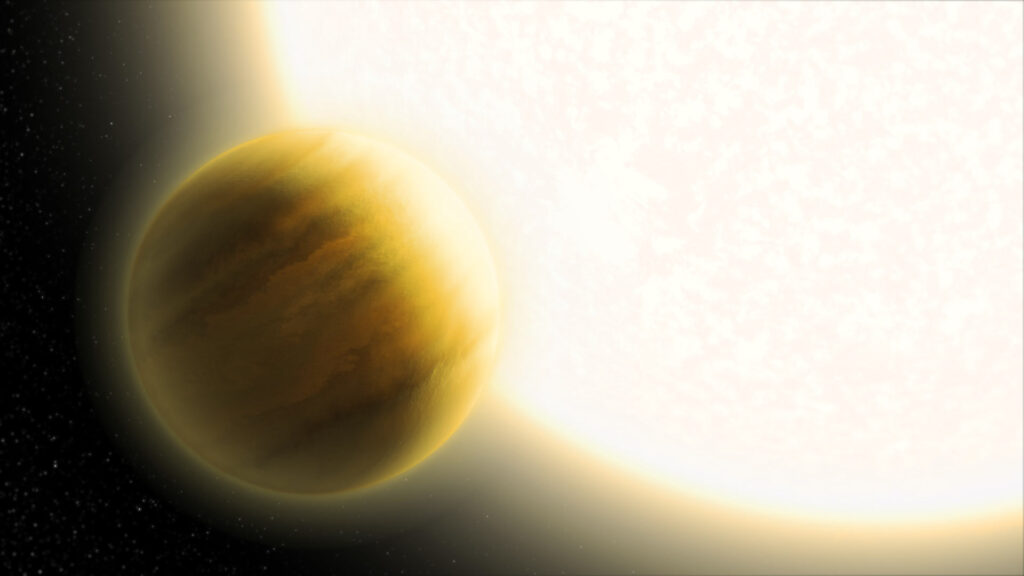An international team of researchers has announced the discovery of a very unusual exoplanet, designated WASP-193b. It has an extremely low density, which is comparable to the density of candyfloss.

WASP-193b orbits a star of spectral class F located at a distance of 1,230 light-years from Earth. The exoplanet was detected photometrically — by regular changes in the brightness of the luminary caused by its transits. The orbital period of WASP-193b is 6.25 days, its orbit passes at a distance of 0.0676 AU (10 million km) from the star. The equilibrium temperature of the exoplanet is estimated at about 1000 °C.
Subsequent measurements show that the radius of WASP-193b is 1.46 times the radius of Jupiter. But when the researchers were able to determine its mass, they were in for a big surprise. It turns out that the mass of the exoplanet is only 13.9% of the mass of Jupiter. This gives an average density of only 0.059 g/cm³, which is literally comparable to the density of candyfloss (0.05 g/cm³). For comparison, the average density of the Earth is 5.51 g/cm³, and Jupiter is 1.33 g/cm³.
At the moment, WASP-193b is one of the least dense exoplanets found by astronomers. One possible explanation for such a low density is that due to its proximity to the star, its atmosphere has expanded abnormally.
The problem is that the mechanism described above assumes that the exoplanet will lose its atmosphere in tens of millions of years, while the age of WASP-193b is about 6 billion years. Therefore, astronomers are planning to make new observations of a loose exoplanet to try to solve its mystery.
You can also read about how astronomers found a super-Earth with an unusually low density.
According to https://arxiv.org
Follow us on Twitter to get the most interesting space news in time
https://twitter.com/ust_magazine
